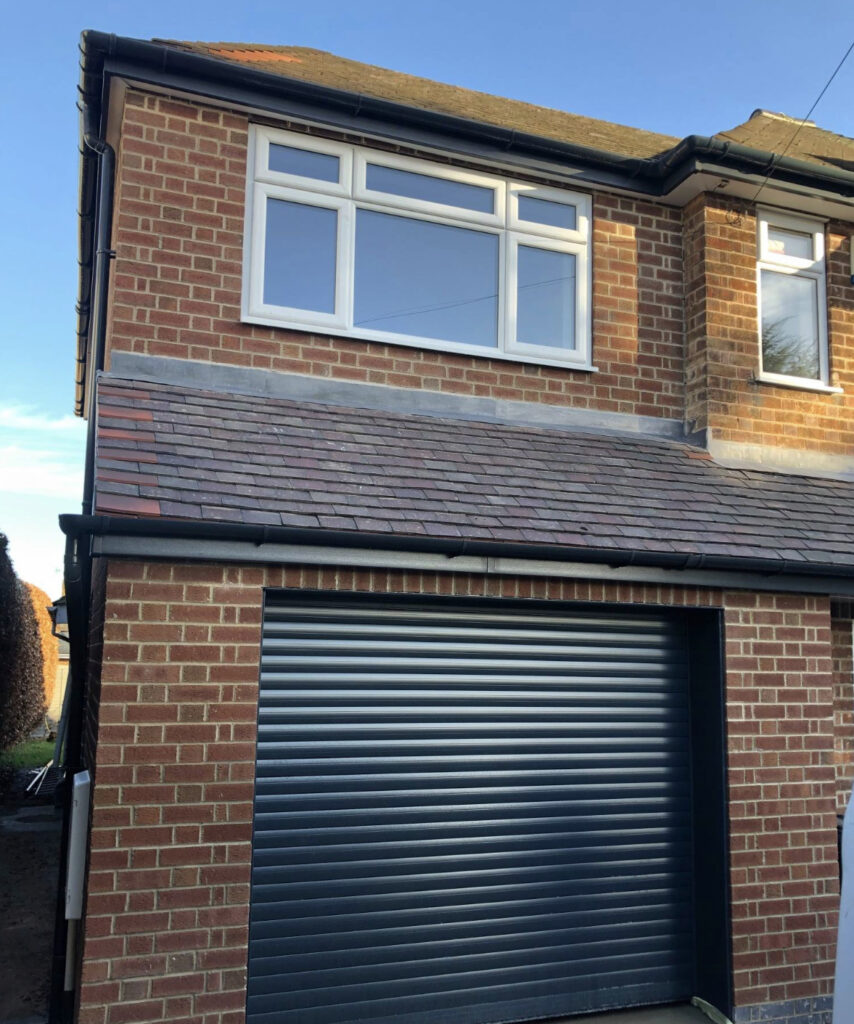
Thinking of building a double/ two storey extension? Find out how to get planning permission for yours in our comprehensive 2024 guide
If you are planning to build a double-storey extension, you are not alone.
There are lots of good reasons why you might want a bigger house: your family is growing, you are working from home a lot more, you need enough room for your hobbies… or you simply want some more space.
If you want more room but don’t want to move, you’ll be considering a house extension. And if you want that extension to add a substantial amount of extra space, then what you might need is a double-storey extension.
So we’re going to take you through what you need to know about two-storey extensions, from the very basics to the planning rules, the build process and – because it’s something you’ll be asking from the start – the cost.
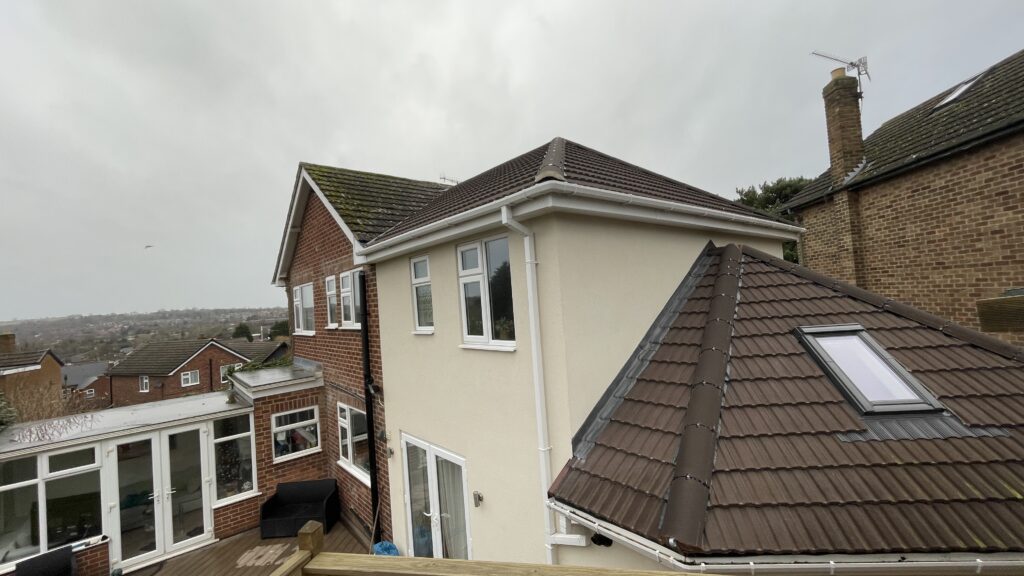
Read on…
What is a two-storey home extension?
A two-storey home extension, simply put, is where you add an extension to your house and then add an additional floor to that extension. They are sometimes called ‘double-storey extensions’.
You may also have an existing single-storey extension and wish to build a first-floor extension over the existing one, which would give you a double-storey house extension.
A two-storey extension is a great way to add another upstairs bedroom to your home and create space downstairs for a larger kitchen, additional bathroom or whatever else you might want or need.
So let’s take a closer look…
Adding a double-storey extension to rear
To begin with, homeowners will often extend their houses to the rear. Many houses in the UK have spacious back gardens and if you’re looking to increase the size of your home, it’s the most obvious land to use.
One advantage is that this won’t change your house’s facade, which will normally please the council. And, as many houses are wider than they are deep, the end result is a more square-shaped building with neat rooms.
Two-storey side extension
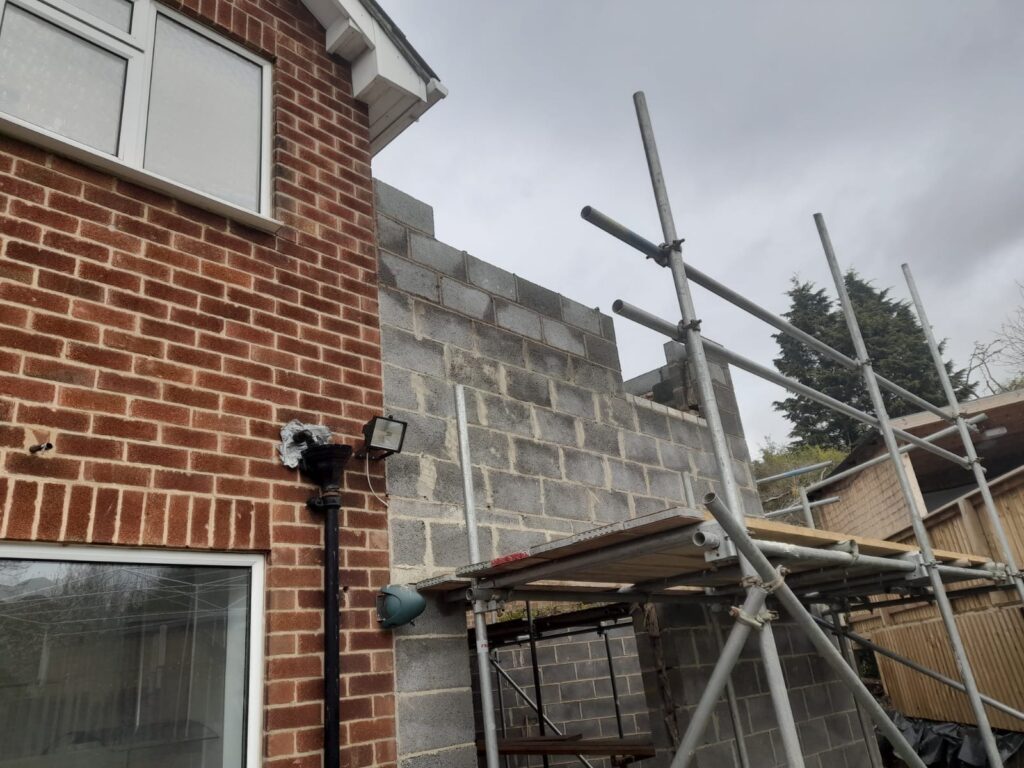
If you don’t live in a terraced house, you might be able to add a double-storey extension to the side of your property – you will need planning permission because permitted development rights can’t help you here.
The good news is adding two-storey extensions to the side of your house will make your house wider, which will in return enable you to enlarge your kitchen and living area or add additional bedrooms.
Alternatively, if you have enough space on one side of your property, you might even consider building a double-storey side extension to create a new house.
Before | Double-storey side extension to end terrace house
After | Larger double-storey side extension to end terrace house and creation of a new-build dwelling house
We also recommend you to discuss your plans with your neighbours. This can actually provide an opportunity for them to do similar work, so they may not automatically be against your proposal.
Two-storey vs Single Storey
If you’re reading this article, chances are you’re thinking about how you can improve and expand your property, and adding another storey could just be that solution. The biggest benefits of choosing to undertake a double storey extension is the value you are adding to your property both from a financial perspective and a lifestyle point of view. Adding a double storey extension can allow you to get creative with the layout of your home, add a feeling of spaciousness and ultimately increase the monetary value of your home should you sell it down the line.
Of course there are negatives tied to undergoing a double storey extension when compared to a single storey extension, the most obvious being the increased cost and the added disruption as the extension is being built. Single storey extensions are generally a little more straightforward, but the value they add can rarely match what can be achieved with a double storey extension.
Permitted development rights for two-storey house extensions
Permitted development rights mean that you can make some changes to your house without applying for planning permission. As a general rule, it makes things faster, cheaper and easier.
Unfortunately, permitted development rights don’t usually apply to most double-storey house extensions, but there are some circumstances where they can come into play. For this to happen, your proposed work needs to meet the following criteria:
- The double-storey extension can be a maximum of 3m deep – on both floors. So if you already have an extension that is more than 3m deep, you can’t build on top of it using PD.
- The double-storey extension cannot be higher at the eaves than the existing eaves, or the roof of your double-storey extension should not be higher than the roof of the original house
- If the double-storey extension comes within two metres of the boundary of your land then the eaves cannot be taller than three metres
- The double-storey extension cannot also include any balconies, verandas, raised platforms, microwave antenna, chimneys, or involve any alteration to the existing house’s roof.
- The materials used on the outside of the new double-storey extension should match the materials used on the outside of the existing house
- Similarly, the roof pitch of the double-storey extension should match the roof pitch of the original house as closely as possible.
- The land used for the double-storey extension should not be within seven metres of any land boundary or extend beyond the rear wall of the original building by more than three metres
- If you’re building a side elevation and want to put a window on the first floor, it should be obscure-glazed and non-opening unless the openable part is higher than 1.7 metres from the room’s floor
Here’s the most important part: You will not qualify for permitted development if you want to build a double-storey extension to the side of your home, or if you live in certain protected areas (eg, a conservation area, an area of outstanding natural beauty or a national park).
Planning permission to build a two-storey extension
If your double-storey extension does not meet the rules for permitted development rights, then you will have to apply for householder planning permission to build your two-storey extension.
What does that mean?
It means it will take longer for you to reach the point when you can start building. It also means that you’ll have to think about whether the council will like the look of your extension. And planning officers will check to see if it is in the spirit of a range of local policies.
In short, your architects and planning consultants will develop your design, prepare your planning drawings and design and access statement to justify why you should receive planning permission for a two-storey extension.
If you want to know more about the planning application process, have a look here.
Two-storey extensions and building regulations
Regardless of the size of your two-storey extension, you will need to apply for building regulations approval. You can do this two ways: with a full set of building regulations drawings, or using a building control notice.
Your architect will work with a structural engineer, who will provide structural calculations as well as advice on how to make sure your double-storey extension is strong and stable.
Designing a double storey extension: How to design yours
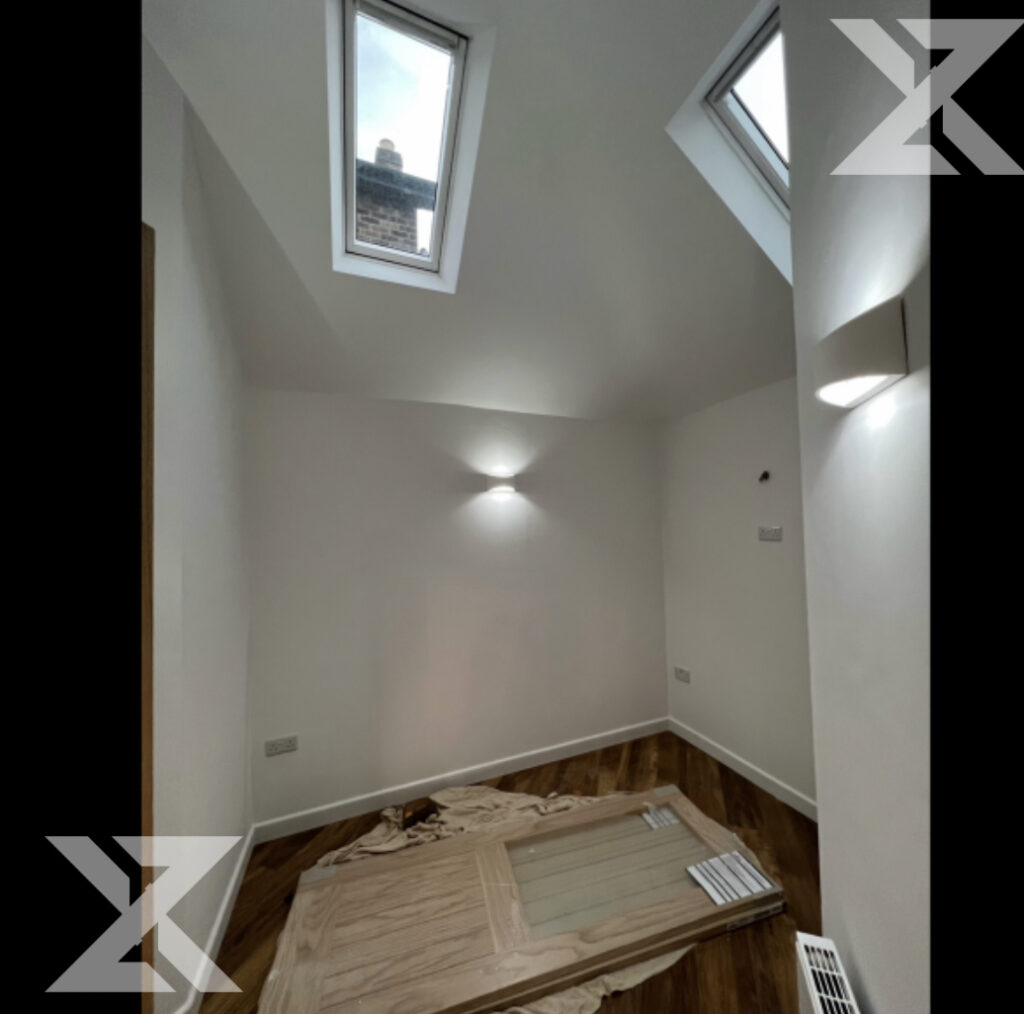
Let’s take a closer look at design ideas for double-storey house extensions…
Internal layout ideas for downstairs
To begin with, what you choose to do with your new downstairs space really depends on your needs.
For example, if you are planning on working from home, it could make a good home office. Or if you are planning to upgrade your kitchen, you can do so and create a spacious open-plan living-dining area.
Imagine for a moment how you can transform your downstairs to add more space, comfort and value!
Internal layout ideas for upstairs
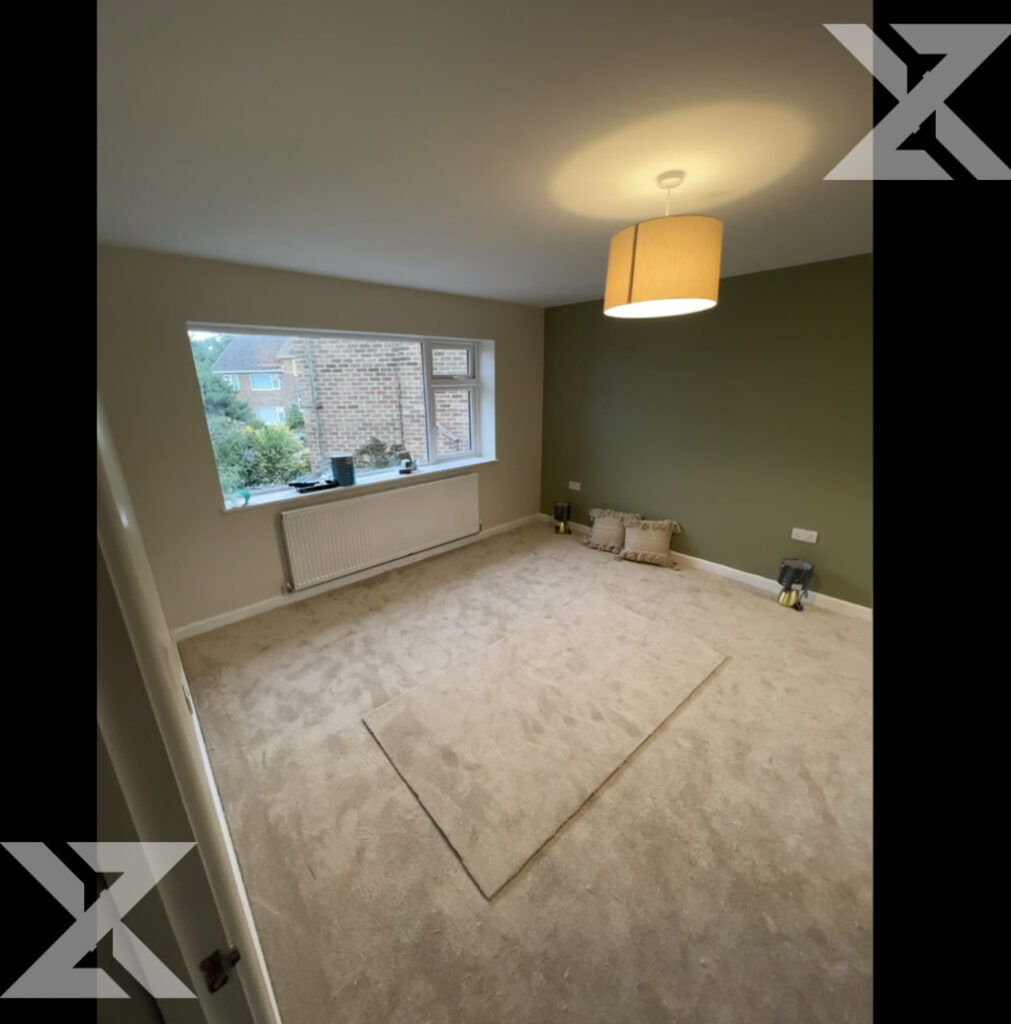
In general, most people go for a bedroom in the upper half of their new extension. However, there’s no rule that says you have to do that.
Here’s another way to think about it: you could use it for a second bathroom; a playroom or nursery if you have or are planning to have children; an office or study or even a little library.
In fact, you might even want the new space to connect to an existing room either in the form of an en-suite bathroom for the master bedroom or just to give you more space in an existing bedroom, bathroom or playroom.
Bi-folding vs sliding doors for double-storey extensions
One of the wonderful things about double-storey extensions is that you can tailor them to your needs and desires. That’s why finding the right doors is so important.
That is why one of the many things you’ll get to choose when you’re planning your double-storey extension is what sort of doors you prefer: bifolding doors or sliding doors.
Now consider it this way: bifolding doors are more unusual and require you to keep the area around the door clear on both sides so you can open them fully.
On the other hand, sliding doors are glass panels that roll along wheels at the top and the bottom so you can open the space between rooms or into the garden cleanly and easily.
Exterior materials of your double storey extension
One of the fun things about a double-storey extension is that you don’t have to make it match with the rest of your house. Yes, you read that right!
Some homeowners use the same materials, and it does look great, but you can also try new materials for the contrast and look into new, environmentally friendly options or affordable metal cladding options, that might suit your needs even better.
For example, you may consider using bamboo for the outer walls and topping your extension with a green roof.
Alternatively, you can use reclaimed timber or brick, which will both help the planet and give your extension a bit of character. With reclaimed timber, you’ll also avoid one of the drawbacks of using wood on the exterior, which is the uncertainty about how it will age and the fear that what looks great when newly built will look shabby within a few years.
Or, you may consider using metal cladding such as steel cladding, aluminium cladding, zinc cladding or copper cladding to achieve a suberb look and great durability for a stunning two storey extension.
Adding a two-storey extension to a detached house
The simple truth is, it is usually easiest to add a large two storey extension to a detached house. It won’t disturb the neighbours as much, and you can choose between a rear double-storey extension or a side double-storey extension.
Quite simply, your options for doing something large and complicated – if that’s what you are thinking of – are much greater. With a detached house, there’s more chance that you will get exactly what you want right now – with other property types, you would need to make more compromises.
Even so, it can pay off not to be too set in your ideas – your architect might be able to design a beautiful double-storey house extension for your detached house that can save you money or give you something that works much better with the rest of the house than your initial plans.
Adding a two-storey extension to a semi-detached house
There are still plenty of choices for adding a two-storey extension to a semi-detached house. You can have a double-storey rear extension or a double-storey side extension on the part of your house that is not attached.
Needless to say, it will be more intrusive for your neighbours than if you had a detached house, so you should pay close attention to any loss of light or overshadowing you might be causing the next-door house.
If you are thinking of a side extension, you need to consider whether the council will mind that you are disturbing the symmetry of the pair of semi-detached houses. Before you commit to the idea, have a walk up and down the length of your street to see if there are many similar examples. Then check if they were approved for planning permission in recent years.
Of course, your neighbours might have already extended out to the side, in which case you would only be matching them. The potential issue there is the council worrying that a group of semi-detached houses are turning into a terrace. For all those reasons, a double-storey side extension can sometimes be a harder sell to the council than a rear one, although we still frequently secure planning permission for difficult house extensions.
Here’s the clue: with a good architect, the disadvantages can be used as the starting point for a distinctive design, maybe with slanting walls or even curved ones. Because you can’t add a simple box, you’ll end up with a creative house extension – something much more special and much more yours.
Adding a double-storey extension to a listed building
If you want to add a double-storey extension to a listed building you will need to apply for listed building consent first.
We need to be clear about this: adding a two-storey extension to a listed building is not easy. You will also need to look at the original design of your house, research the materials and techniques used and then see if you can replicate them so that the house doesn’t look mismatched. Sometimes a contrast will work better, but that’s even more of a challenge architecturally. It’s not impossible to do, but it will involve more effort.
A word of caution: always work with experienced listed building architects, planning consultants and contractors to preserve your listed building’s historical assets, including its structure.
For an in-depth exploration of how to go about extending a listed building, head here.
Adding a double extension in a conservation area
Just as permitted development is never an option for extending a listed building, you’ll always need to get planning permission before adding a double-storey extension in a conservation area.
Conservation areas were introduced during the 1960s to protect and preserve the character of a local area due to its unique architectural or historical character that needs to be preserved under Section 69 of The 1990 Planning (Listed Buildings and Conservation Areas) Act.
The positive thing about a conservation area is that the rules should – in theory – be much clearer. That’s particularly true if you were thinking about a double-storey side extension, which would have to stick closely to the conservation area appearance if your house as it is right now has been judged to be making a positive contribution to the local character. You will have more freedom with a two-storey rear extension that can’t be seen from the street but your choices will still be more restricted than elsewhere.
Before you hire an architect, make sure that they have good experience of working in conservation areas and understand the particular nature of the one your house is in.
Do a little bit of research and try to be clear on what you’re looking for and what you want to avoid. Get an approximate budget and understand how this might affect your choices and options.
Take a look for an architect online. If you visit the Royal Institute of British Architects’ website, you can use the ‘Find an Architect’ tool to start searching. If you live in a smaller community, talk to friends, family and neighbours to see if they have any recommendations or ideas.
When you’ve found a talented extension architect, make sure that they’re aware of all the necessary planning restrictions and building regulations that are applicable in your area. If you live in a listed building, or a conservation area, make sure that they have experience with this and ask to see some examples of their work.
You might want to try and find a multidisciplinary practice, a firm of architects and planning consultants and interior designers who can handle all of the planning, design and construction and any unexpected challenges. They may also be able to help you find a builder and inspect the construction of your two-storey home extension.
How long does a two storey extension take?
The short answer: generally about 8 to 11 months from the very first steps to being able to cook in your new kitchen or sleep in your new bedroom. But it’s probably more useful to break down the process into three stages.
Here’s how that works:
- Developed Design + Planning: 3 months
- Technical Design + Building Regulations : 2 months
- Contract Administration + Construction : 5 months
However, whenever you embark on a project that involves construction, you need to be prepared for unexpected delays. So please view these timings as an indication of what usually happens, rather than something you should be making firm commitments by.
For peace of mind, it’s probably best if you prepare yourself for a completion date that’s over a year from when you begin.
